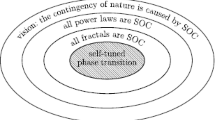Abstract
Undistinguishing parastatistics of objectively distinguishable objects is considered. It describes clusters in the supercritical state. The relationship between the mesoscopic physics of clusters and the macroscopic thermodynamics of supercritical isotherms is established. We construct the supercritical pattern of isochores and isotherms under the assumption that the following three points: the Boyle temperature, the Boyle density, and the critical point are known. Passing from negative chemical potentials to positive ones, we obtain new relations differing from relations related to the well-known Gentile statistics.
Similar content being viewed by others
References
V. P. Maslov, “Undistinguishing statistics of objectively distinguishable objects: Thermodynamics and superfluidity of classical gas,” Math. Notes 94(5), 722–813 (2013).
Ya. G. Sinai, Theory of Phase Transitions (Nauka, Moscow, 1980) [in Russian].
D. Ruelle, Statistical Mechanics (W. A. Benjamin, Inc. New York, Amsterdam, 1969; Mir, Moscow, 1971).
V. A. Malyshev and R. A. Minlos, Gibbs Random Fields: Cluster Expansions Mathematics and its Applications, Dordrecht, Netherlands (Kluwer Academic Publishers, Boston, 1991).
V. P. Maslov, Zeno line, Binodal, T − ρ Diagram and Clusters as a new Bose-Condensate Bases on New Global Distributions in Number Theory, arXiv:1007.4182v3 [math-ph], 28 Dec 2010.
V. P. Maslov, “Effect of a measuring instrument in the “Bose condensate” of a classical gas in a phase transition and in experiments with negative pressure,” Teoret. Mat. Fiz. 175(1), 93–129 (2013) [Theoret. and Math. Phys. 175 (1), 93–129 (2013)].
L. D. Landau and E. M. Lifshits, Course of Theoretical Physics, Vol. 3: Quantum Mechanics: Non-Relativistic Theory, 2nd ed. (Nauka, Moscow, 1964; translation of the 1st ed., Pergamon Press, London-Paris and Addison-Wesley Publishing Co., Inc., Reading, Mass., 1958).
V. E. Panin and V. E. Egorushkin, “Curvature solitons as generalized structural wave carriers of plastic deformation and fracture,” Fizicheskaya Mezomekhanika 16(3), 7–26 (2013) [Physical Mesomechanics 16 (3), 267–286 (2013)].
V. E. Panin and V. E. Egorushkin, “Nanostructural states in solids,” Fizika Metallov i Materialovedenie 110(5), 487–496 (2010) [The Physics of Metals and Metallography 110 (5), 464–473 (2010)].
V. P. Maslov, S. A. Molchanov, and A. Ya. Gordon, “Behavior of generalized eigenfunctions at infinity and the Schrödinger conjecture,” Russian J. Math. Phys. 1(1), 71–104 (1993).
V. P. Maslov, “On the appearance of the λ-point in a weakly nonideal Bose gas and the two-liquid Thiess-Landau model,” Russian J. Math. Phys. 16(2), 146–165 (2009).
W.-S. Dai and M. Xie, “Gentile statistics with a large maximum occupation number,” Annals of Physics 309, 295–305 (2004).
Author information
Authors and Affiliations
Corresponding author
Additional information
The article was submitted by the author for the English version of the journal.
Rights and permissions
About this article
Cite this article
Maslov, V.P. The particle accumulation phenomenon for a positive chemical potential in the supercritical state. Math Notes 95, 399–406 (2014). https://doi.org/10.1134/S0001434614030110
Received:
Published:
Issue Date:
DOI: https://doi.org/10.1134/S0001434614030110




